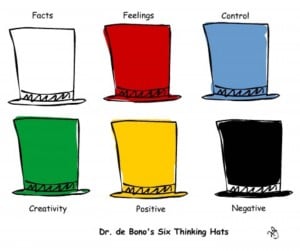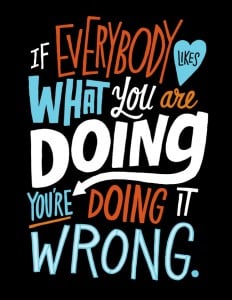Yesterday I spent quite a while making a new infogram about what Year 12 students must do over the Term 1 holidays. Before I publish these types of things I always seek my daughter’s opinion on the points – she being in Year 12 – I find it is very important that she thinks it is worthwhile putting it ‘out there’. Well last night I got a response that I was not expecting – you can read it in the post heading…
I must admit, I was offended. I did try to explain how important it was but to no avail, so I just shut down and watched some mindless TV prior to one of my favourites on a Wednesday night – I love “The Good Wife” – are you shocked?
 Anyhow, back to the point, I can be easily distracted, and am especially good at procrastinating with work although this tends to be an advantage for my family as I mostly procrastinate and avoid ‘work’ by cooking. BTW I have already prepared a Calabrian parmiggiano sauce for tonight’s dinner!
Anyhow, back to the point, I can be easily distracted, and am especially good at procrastinating with work although this tends to be an advantage for my family as I mostly procrastinate and avoid ‘work’ by cooking. BTW I have already prepared a Calabrian parmiggiano sauce for tonight’s dinner!
Fight it – back to topic at hand. So now after I’ve had a chance to think I’d like to propose 7 ‘interesting’ points that I hope will inspire Year 12s and in fact any student to ponder during the term break.
You’re tired. Tired of early wake ups, tired of trudging your way to school, tired of attending and listening to blablablabla lots of work to do, blablabla here’s the homework, blablabla SAC coming up next week, blablabla in preparation for SACs you need to … blablabla. Tired of coming home to do more work, prepare study notes, watch this video, read that text, complete these exercises, study, study, study. Am I warm? Okay then, why not take a break? Yes I know, your teachers have said that you need to do at least 10 hours of work over the holidays – and for Year 12s that’s for EACH subject! So that means 50 hours of homework /study, over 10 days, not counting the weekends, that’s 5 hours a day on average. So let’s break that down:
- 10 days = 240 hours (not counting 3 weekends x 2 days in each = 6 days, 144 hours free).
- 24 hours in a day minus 5 hours of homework / study = 19 hours free
- 19 hours free, let’s say, 10 hours sleep = 9 hours per day free
- 9 hours a day for 10 days = 90 hours free
- 90 hours over 10 days to work, travel, socialise or just lounge around, finally…
- 144 hours (weekends) minus 40 hours (per day) average sleep time (or less cause you are too busy raging) + 90 hours (week days) over two weeks = 194 hours free over the term break – and yes it does include lunch at Nonna’s house on Easter Sunday BUT the Easter Monday public holiday makes up for it, so no complaints!
- If we do the calculations for time over the last term, that is 10 weeks of school (50 days, actually less due to staggered start times, and a public holiday or two) but essentially 50 days x 24 hours = 1200 hrs. School’s in for 7 hours (8:30am-3:30pm) a day for 50 days = 350 hours, Year 12s should be doing at least 3 hours of homework / study a night, 3 x 50 = 150 hours. Calculating an average of 8 hours sleep per night over 50 days = 400 hours. That means 1200 minus 350, minus 150, minus 400 = 300 hours free, not including weekends over the 50 weeks. So you only had 300 hours during weekdays over 50 weeks of the term BUT you get 194 hours free over two weeks during term break. Get the picture?
Okay, was that a bit more interesting, something you haven’t heard before?
Good! Now … let me spell out your 6 MUST DOs for the holidays…that is… if you WANT to do well in VCE / HSC at the end of the year. If not, well enjoy your holidays but don’t blame the system if you don’t achieve your best, whatever that might be + effort = satisfaction. Dreams + No / little effort = Disappointment. I’ll let you choose…
Here’s the infogram I prepared yesterday

easel.ly





